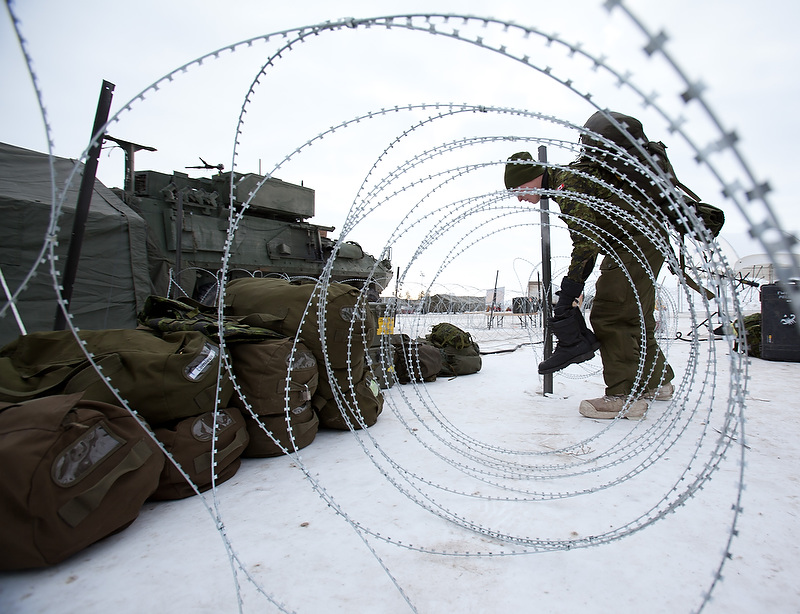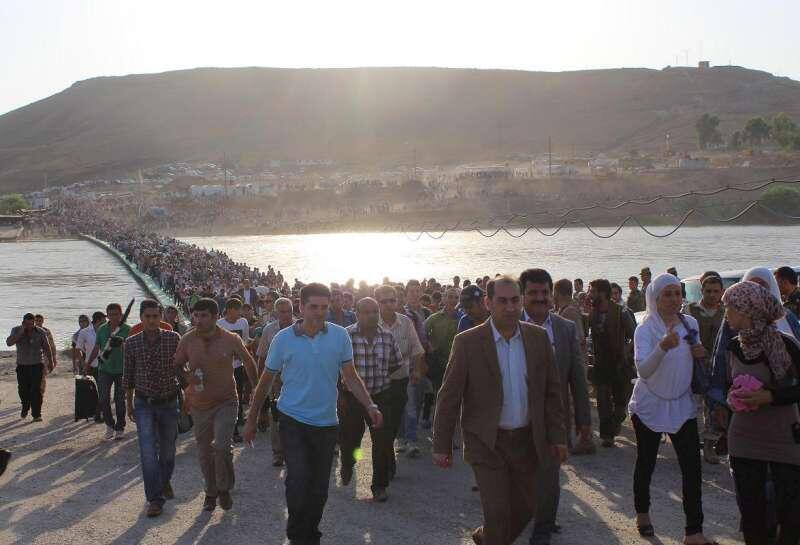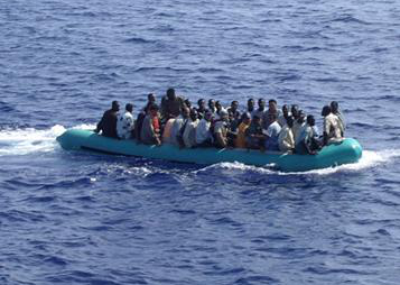
Canada’s North saw a considerable increase in air traffic from May 26 to June 1 as the North American Aerospace Defence Command (NORAD) launched its annual joint exercise Amalgam Dart. With US F-15 Eagles operating from Yellowknife, Canadian CF-18 Hornets flying out of Inuvik, and other assets deployed from American airbases in Alaska, the exercise will involve 15 aircraft and more than 300 military personnel. Previous editions of Amalgam Dart have involved deployments of a similar scale.
However, what distinguishes the 2015 edition from previous years is the scope of airspace involved. Canadian and American aircraft will respond to simulated threats throughout the Arctic, ranging from Resolute Bay, Nunavut, to the Chukchi Sea off Alaska’s northern coast. It also coincides with Arctic Challenge 2015, a two-week NATO exercise that began on May 5 and involving almost 100 aircraft from the United States, Germany, the Netherlands, France, the United Kingdom, Switzerland, Norway, Sweden, and Finland. Estimates place Arctic Challenge as the largest scale joint airpower exercises ever held in Europe. In contrast, previous editions of Amalgam Dart were held in isolation and were much more limited in scope; the 2007 edition was confined to patrols along the British Columbian coast, for example

The active Swiss, Swedish, and Finnish participation in the European exercise is noteworthy. Though members of NATO’s Partnership for Peace, they have maintained nominal neutrality through the Cold War and beyond. The Russian Federation’s increasingly aggressive behaviour seems to have increased interest in NATO membership among some of those European countries historically reluctant to join. Following a parliamentary election in April 2015, Finland’s new coalition government indicated that it may consider formally applying for NATO membership. Russian military aircraft have violated Swedish airspace in the Baltic Sea on several occasions, even staging a mock attack on Sweden’s Gotska Sandon island in March 2013.
Even so, it is important to note that the NORAD exercise is not necessarily aimed at Russia. Scenarios to be simulated may also include responding to a terrorist attack that involves one or more hijacked passenger liners or the interception of aircraft or vessels participating in criminal activities. The Arctic also offers more options than if the exercises were held off North America’s Atlantic or Pacific coasts. For example, the 2015 edition of Amalgam Dart will prominently feature several of the US Air Force’s E-3 Airborne Warning and Control System (AWACS) aircraft. The deployment of these aircraft, with their sophisticated sensors and communications equipment, across the vast expanse of the Arctic may allow NORAD to better understand how well Canadian and US assets can coordinate over a great distances and determine whether gaps could emerge in future air defences.
Regardless, the Russian authorities have taken issue with Amalgam Dart and Arctic Challenge. On May 25, Russia Today said the common theme to the exercises is “a military fear of Russia” and accused NATO of reviving Cold War tensions. Yet the Russian Federation Air Force launched its own drills in the Arctic, involving roughly 250 aircraft, on May 26-29. In a prevocational move, Russia’s Deputy Prime Minister Dmitry Rogozin said of the Arctic region at the launch of these surprise drills, “It is our territory, it is our shelf, and we will provide its security. And we will make money there.” This large-scale exercise, involving more aircraft and personnel than Arctic Challenge and Amalgam Dart combined, is the third such drill initiated by the Russian Federation in three months. Aside from driving European neighbours toward NATO membership, one wonders how many more snap exercises can be launched by the Kremlin before exhaustion sets in throughout the Russian military apparatus.




